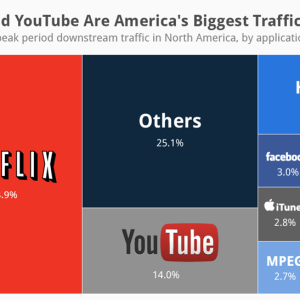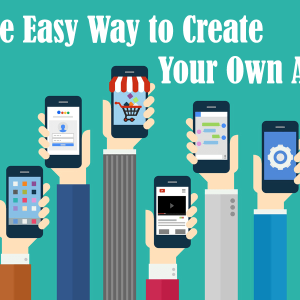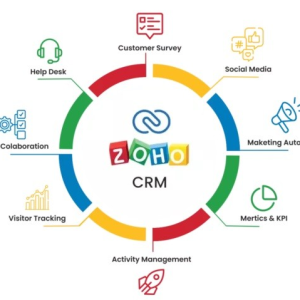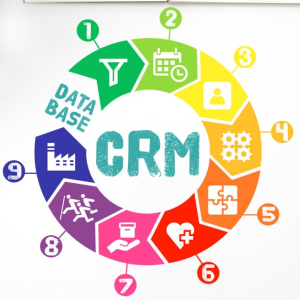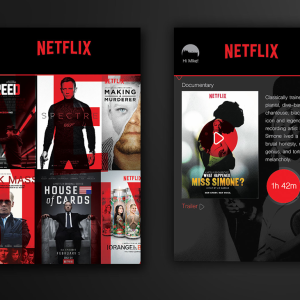Introduction
51% of content consumed on the internet is driven by organic Google search
(Kuno Creative)
Creating content that hooks readers and ranks well on Google doesn’t have to be difficult. All you need is 10 minutes and these tips to get you started. You’ll learn how to come up with great ideas, find the right audience, and create content that stands out from the rest.
What Is Content Marketing?
The content marketing strategy is a powerful way to reach your audience and create an experience where they will want more.
There are many ways that you can go about implementing this effective method for attracting customers, such as blogging or social media posts – but one thing’s certain: It all starts with great information!
Creating great content isn’t always easy. But with a little time and effort, you can produce content that is both useful and interesting to your audience. And, as a bonus, if you create truly exceptional content, it has the potential to rank well on Google and other search engines.
Why Do You Need Content?
There are many reasons why businesses should invest in content marketing. Perhaps the most important reason is that good content can help businesses to attract and retain customers. By providing valuable information, businesses can create an experience where customers will want more.
Content is also a great way to promote your business online. By creating blog posts, social media updates, and other forms of content, you can reach a wider audience and generate more interest in your products or services.
And, as mentioned before, content that is well-written and informative has the potential to rank well on search engines. This means that people who are looking for information related to your business are more likely to find your website – and this can lead to more customers and more sales.
So, as you can see, there are many good reasons to invest in content marketing. If you want to attract and retain customers, promote your business, and improve your search engine ranking, then creating great content should be a top priority for your business.
How To Come Up With Great Ideas For Content
The first step in creating great content is to come up with ideas for what to write about. And, fortunately, there are several ways that you can generate ideas for your content.
1. Identify your audience’s needs and wants. What information are they looking for? What problems do they need to solve?
2. Look at what other businesses in your industry are doing. What content are they creating? How can you do it better?
3. Use keyword research to identify popular topics and keywords that people are searching for.
4. Keep up with the latest industry news and trends. What’s new and exciting in your industry?
5. Ask your customers and employees for ideas. They can be a great source of inspiration!
6. Brainstorm with your team. Get everyone together and bounce around ideas until you come up with something that you’re all excited about.
Pro tip: There’s a technique we use at 12 channels to brainstorm ideas or resolve problems within our team without wasting time and resources. If it helps another, then definitely worth the try! Most of you might already know, but to those who don’t, “How to eliminate fifty percent of your business worries’ ‘ by Dale Carnegie – is the solution. Whether you are a fan of podcasts or books, he advises applying 4 questions to your business when problems arise.
- What is the problem?
- What is the CAUSE of the problem?
- What are all possible solutions to the problem?
- What solution do you suggest?
After your team has answered these questions, the session will get easier and shorter without the hassle and headaches – he suggests. Further, you will be able to take actionable steps toward resolving the issue.
Although every time a meeting is held, it necessarily need not be a problem-solving session. Have your team come up with a list of ideas for growth and why each will be the best option. You can ask them to identify how much change they think would occur if these plans were put into action, too!
This way of brainstorming will save a lot of time, energy, and resources that would go into solving a problem that might not even exist.
7. Use content curation to find the best content that’s already out there and share it with your audience.
8. And, finally, don’t be afraid to experiment. Sometimes the best ideas come from trying something new.
Once you have a list of potential topics, it’s time to start writing. But before you start, there’s one more important step: finding the right audience for your content.
Finding The Right Audience For Your Content
Now that you have some ideas for what to write about, it’s time to start thinking about who you’re writing for. After all, not every piece of content will be relevant or interesting to every single person.
1. Define your target audience. Who are you trying to reach with your content? What are their needs and wants?
2. Identify where your target audience hangs out online. What websites do they visit? What social media platforms do they use?
3. Create buyer personas. These are fictional representations of your ideal customer, based on real data and research.
4. And, finally, consider using psychographics to segment your audience. This is a way of grouping people based on their shared interests, values, and lifestyle choices.
Once you have a good understanding of who you’re writing for, it’s time to start creating content that will hook them in and keep them coming back for more.
Simple, right? Not everyone is a natural-born writer. But with a little practice, anyone can learn how to write great content.
Here are a few tips to get you started:
1. Write as you talk. Use simple, everyday language that everyone can understand.
2. Keep it short and sweet. No one wants to read a novel. Get to the point and make your point quickly.
3. Write for your audience, not for yourself. Keep your readers in mind with every piece of content you write.
4. Use headlines and subheadings to break up your text and make it easier to read.
5. And, finally, proofread everything before you hit publish. Typos and grammar mistakes will make you look unprofessional.
Creating Content That Hooks Readers And Ranks High On Google
Now creating “any” content is different from creating content that hooks readers and ranks well on Google. Readers are easier to please than Google. But it is important to make both happy because you can’t win awards or get discovered without a platform to showcase your talent. Your audience will never know about you if they’re not looking for it. And, platinum trophies are only worth their weight in gold when they have an audience to shine for.
So let’s see how you can make both of them happy!
The process of creating content that both hooks readers and ranks well on Google begins with an understanding of what these two groups want.
Remember – Write for your audience first, and Google second
This means creating content that is interesting, informative, and engaging for your readers. But it also needs to be keyword-rich so that it will rank well on search engine results pages.
What does your audience want to see?

Your audience wants to be engaged, they want fresh perspectives and new ideas, and most importantly- they want to be entertained. If you’re not providing them with something that interests them, they will quickly become disengaged and move on to the next thing.
What does Google want to see?
Google wants to see content that is relevant, well-written, and informative. But most importantly, Google wants to see shareable content.
If your content is not being shared, it is not going to rank well on Google.
So how do you create content that is both shareable and interesting?

Here are a few tips:
1. Write headlines that make people want to click
Your headline is the first thing people see, and if it’s not interesting, no one is going to want to read your article. Write headlines that are attention-grabbing and make people want to learn more.
2. Find new angles
If you’re writing about a topic that’s been covered a million times before, it’s going to be hard to get people to care. But if you can find a new angle or perspective on a popular topic, you’re more likely to get people to read your article.
3. Keep it short and sweet
No one wants to read a novel, so make sure your articles are easy to read and digest. Get to the point and provide value without going on and on.
4. Use images, videos, and infographics
Make your articles more visually appealing by adding images, videos, and infographics. People are more likely to read an article that is accompanied by visual content.
5. Promote your content
Once you’ve created a piece of content, make sure you promote it! Share it on social media, email it to your list, and get the word out there. The more people who see your content, the more likely it is to be shared.
But first, promoting content is not as plain as it seems.
How to promote your content
To promote your content, you’ll need a social media strategy. And before all that, you need to decide on which platforms make the best for your business content.
Different businesses will have different goals, and thus will require different strategies. But some general tips can help you get started:
To Promote Your Content #1. Figure out where your audience hangs out
The first step to promoting your content is to figure out where your target audience spends their time online. If you’re trying to reach college students, for example, you’ll want to be active on platforms like Snapchat and Instagram. But if you’re trying to reach business professionals, LinkedIn would be a better bet.
To Promote Your Content #2. Post at the right time
Timing is everything when it comes to social media. You need to make sure you’re posting when your audience is most likely to be online and engaged. If you post when no one is around, your content is not going to get seen.
To Promote Your Content #3. Use relevant hashtags
Hashtags are a great way to get your content in front of more people. But using too many hashtags, or irrelevant ones can do more harm than good. Do some research to figure out which hashtags are most relevant to your industry and audience.
To Promote Your Content #4. Use visuals
As we mentioned before, people are more likely to engage with content that is accompanied by visuals. So make sure you’re using images, videos, and infographics in your social media posts.
To Promote Your Content #5. Engage with your audience
Social media is not a one-way street. If you want people to care about your content, you need to show that you care about them. Like and comment on their posts, answer their questions and start conversations.
To Promote Your Content #6. Run ads
If you want to reach a larger audience, you can always run ads on social media. Facebook and Instagram offer a variety of ad types that can help you promote your content to the people who are most likely to be interested in it.
To Promote Your Content #7. Analyze your results
Finally, don’t forget to track your results and analyze your performance. See which type of content gets the most engagement, which social media platform is most effective, and what time of day yields the best results. Then, you can adjust your strategy accordingly.
Measuring the success of your content marketing efforts
Measuring the success of your content marketing efforts can be tricky. But if you’re not keeping track of your progress, it’s impossible to know what’s working and what isn’t.
There are a few key metrics you should be tracking:
1. Traffic
The first thing you’ll want to track is the traffic to your website or blog. This will give you an idea of how many people are seeing your content.
2. Engagement
Next, you’ll want to track engagement, which refers to the number of people who are interacting with your content. This could include things like comments, shares, and likes.
3. Leads
If you’re using your content to generate leads, you’ll want to track how many leads you’re getting from your content.
4. Sales
Finally, if you’re selling products or services, you’ll want to track how many sales you can attribute to your content marketing efforts.
Content marketing is a great way to connect with your audience and promote your business. And there are tons of metrics you can choose to measure. But without traffic, there is no engagement, without engagement, there are no leads, and without leads – no sales either! Hence, measuring these 4 metrics first would be ideal to get an idea of how your content marketing strategy is doing.
These are just a few metrics you can use to measure the success of your content marketing efforts. If you want to learn more, we have an entire blog post dedicated to content marketing metrics.
Conclusion
Creating content that’s both informative and engaging is no easy feat, to rank well on Google, you must know the rules first. And with these tips, you can start creating great content in just 10 minutes.
And if you need help getting started with content marketing, 12Channels is a full-service digital marketing agency. We can help you with everything from coming up with ideas to create and promote your content. So what are you waiting for? Get started with your next big content marketing campaign today!




